6 ASX IPOs that bounced back with a vengeance after a nuanced debut
![]() Nick Sundich, July 18, 2024
Nick Sundich, July 18, 2024
The list of ASX IPOs that bounced back is nowhere near as long as the list of IPOs that flopped and never recovered. This is because while it is easy to destroy investor confidence, with just one prospectus forecast miss, it is very difficult to win it back. It takes a lot of time and effort to win investor confidence once more, but it is not impossible – as these companies show.
6 ASX IPOs that bounced back with a vengeance
EBR Systems (ASX:EBR)
EBR Systems’ share price is not quite above its IPO price, but the only reason is because of a capital raising it undertook in 2022 – its $289m market capitalisation back then is now $312.7m. The company has a wireless device that is the size of a cooked grain of rice that can treat heart failure by providing pacing stimulation directly inside the heart’s left ventricle.
EBR listed in November 2021, the worst possible time as the Tech Wreck was just getting started – falling from $1.08 to a low of 37c per share by June 2022. The company’s shares slowly recovered after an all time low, but things got exciting in May 2023 when the company released results of its pivotal clinical trial. Shares sold off after its capital raising, and after perceptions it was taking longer than usual to submit to the FDA. The reality is, it was a long process with multiple modules needing to be submitted. This final module will be submitted this quarter, and approval is expected in the March quarter of 2025. Shares have been helped as the deadline has come closer and as company joined the All Ords in March – triggering institutional buying.
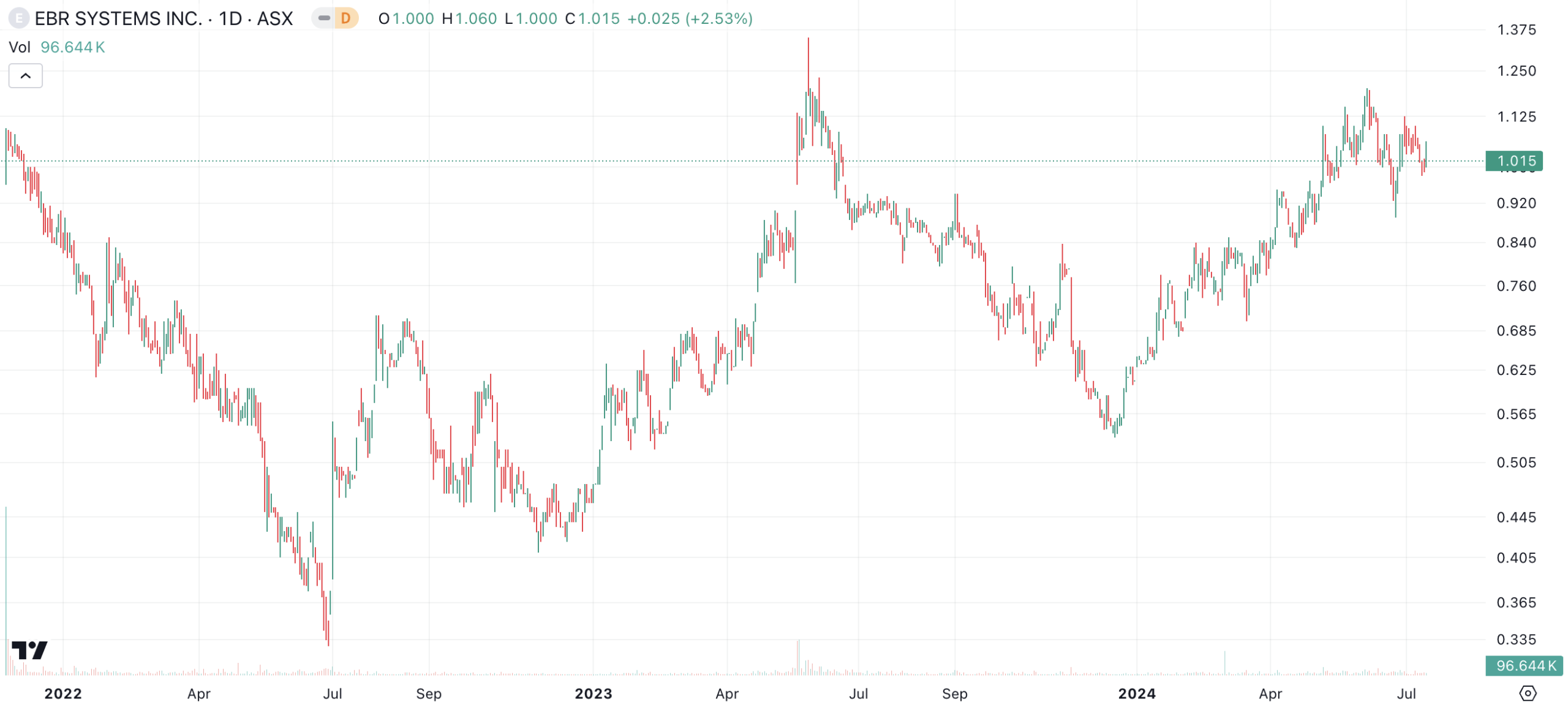
EBR Systems (ASX:EBR) share price chart, log scale (Source: TradingView)
Life 360 (ASX:360)
Yes, another company impacted by the Tech Wreck – among other things. Life360 operates an app that allows parents and children to stay connected. The app’s original premise was for parents to see the location where their children are, an idea that remains its primary capability. Life360 listed on the ASX in 2019 because it was too small for the NASDAQ but thought it was the right time to list.
The company has always had growing revenues and user numbers, but took a while to reach profitability. Investor concerns over profitability have been paramount as interest rates rose, although these have occasionally eased when it recorded exceptional growth in other metrics. Profitability is expected in FY26, according to analysts covering the company. Right now it is trading at an all time high, over three times its 2019 IPO level. We have seen from the experience of the first half of 2022 that this could be wiped out just as easily. But for now, it deserves to be on the list of companies that bounced back.
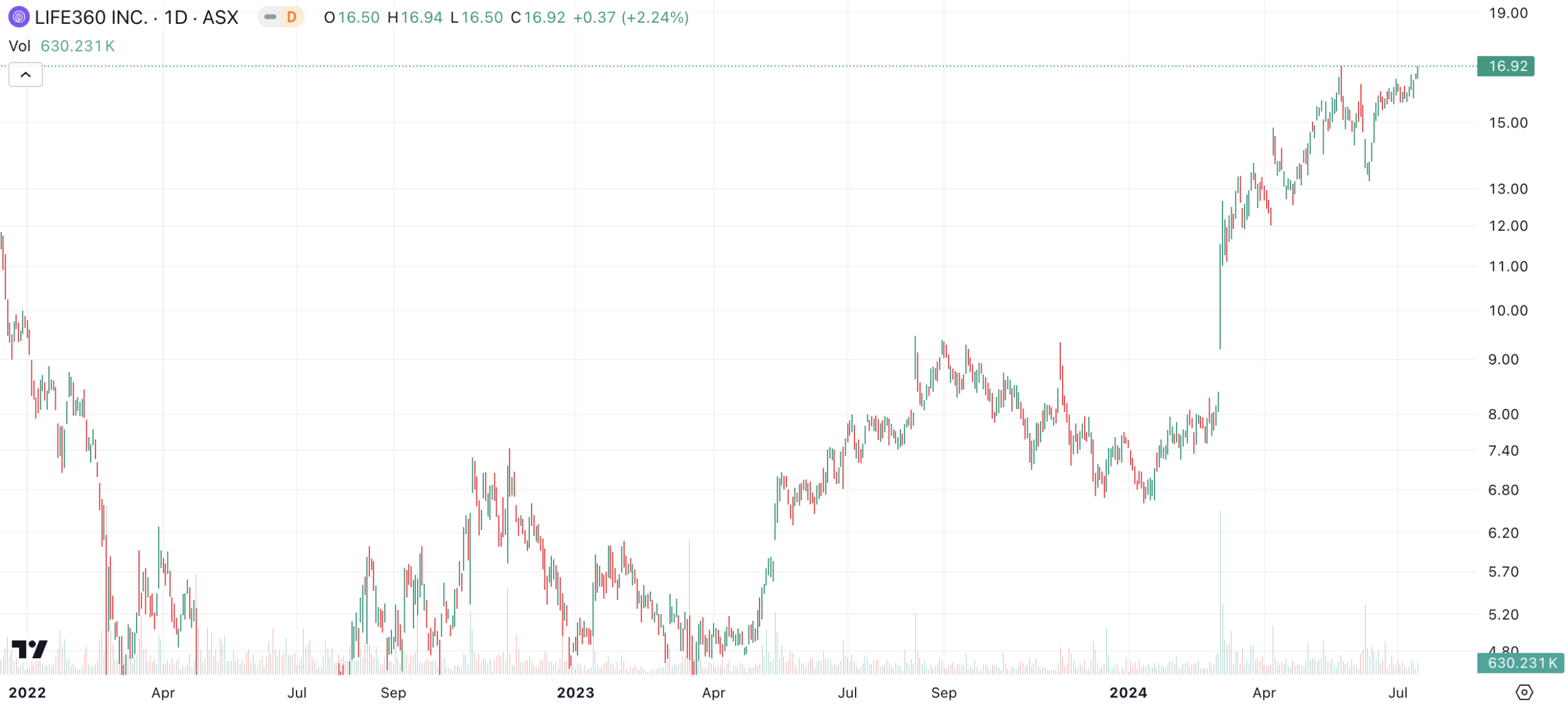
Life360 (ASX:360) share price chart, log scale (Source: TradingView)
Dalrymaple Bay Infrastructure (ASX:DBI)
Of all the companies over $1b, we doubt any have slipped under the radar more than this one. Its flagship asset is Queensland’s busiest coal terminal, which is south of Mackay.
After a nuanced debut in late 2021 it has enjoyed slow but steady growth. Its net profit in FY23 increased fivefold from FY22 to $34m, due to higher fees from the coal exports handled (it charges $3.44 per tonne). After Chinese-bound chips shunned Australia due to the Morrison government’s diplomatic spats with Beijing, coal demand returned with a vengeance. Even in spite of an 8% increase to its fee, the company has argued it is a cheaper port than rivals.
You could argue investors should be concerned about what will happen as coal is phased out. The company is looking to diversify into liquid ammonia exports as well as if renewable energy projects could be built near the terminal. And there could be more expansion to come at the port.
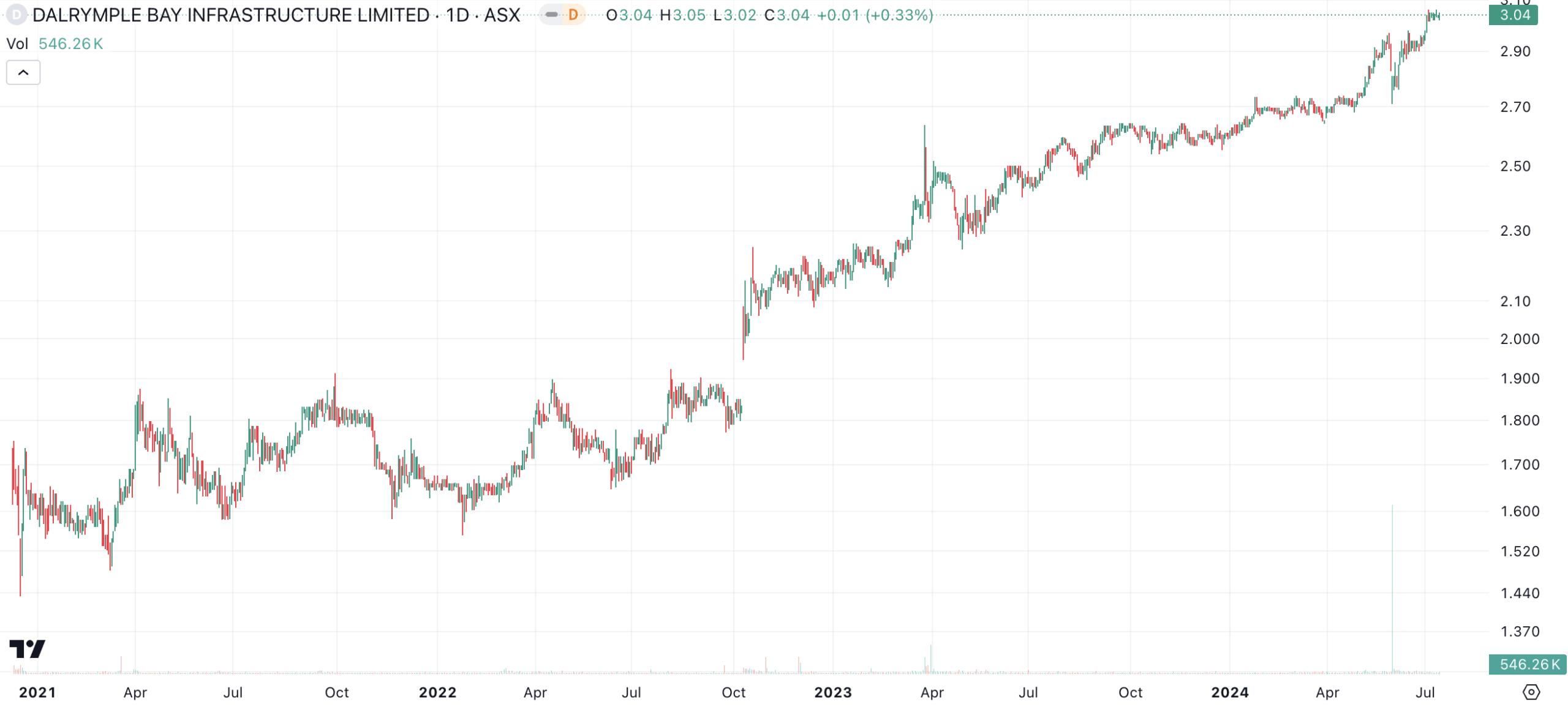
DBI share price chart, log scale (Source: TradingView)
Chrysos (ASX:C79)
This is a very recent case study of a bad IPO that has become good. Chrysos’ technology is high-powered X-rays that process rock samples of gold and other metals. Investors shunned the company because it was not profitable, highly reliant on the gold market for its revenue and also on suppliers in China for the manufacturing of its devices.
But 18 months on, it just raised capital at a premium to its IPO price. It improved its top and bottom lines and secured major partnerships with Barrick and international laboratory business MSALABS.
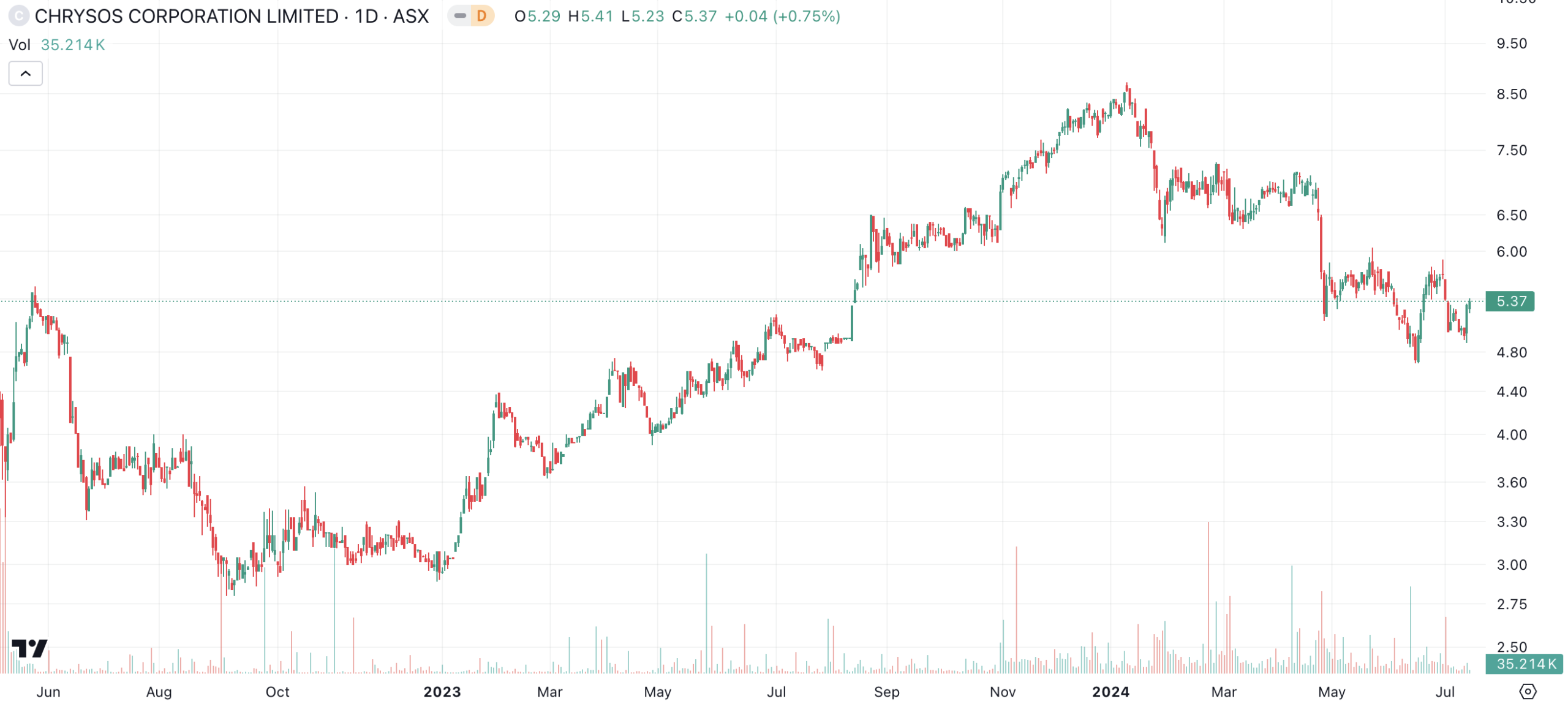
Chrysos (ASX:C79) share price chart, log scale (Source: TradingView)
Step One (ASX:STP)
Step One nearly doubled post its IPO, only to crash to 30c after listing at over $1.40. The trigger for the decline was the company disclosing the identification of a potential overclaim of GST credits. It was not too high, at $1.3m, but this arguably led to investors asking: When you’re struggling economically, why pay $29 per pair of underwear when you can pay just $3?
But things have improved in the last 12 months as it expanded into international markets and into women’s wear. It has also expanded its distribution channels, relying on Amazon among others, after previously wanting to only sell direct through its own ecommerce channels.
For its upcoming FY24, the company has guided to $84m in revenue (up from $65m 12 months ago) and $17m EBITDA (up from $12m last year and an $0.1m loss the year before). And the company boasted nearly 1.4m customers around the world. When people are willing to pay $29 per pair of underwear, it doesn’t really matter why they are willing as long as they are.
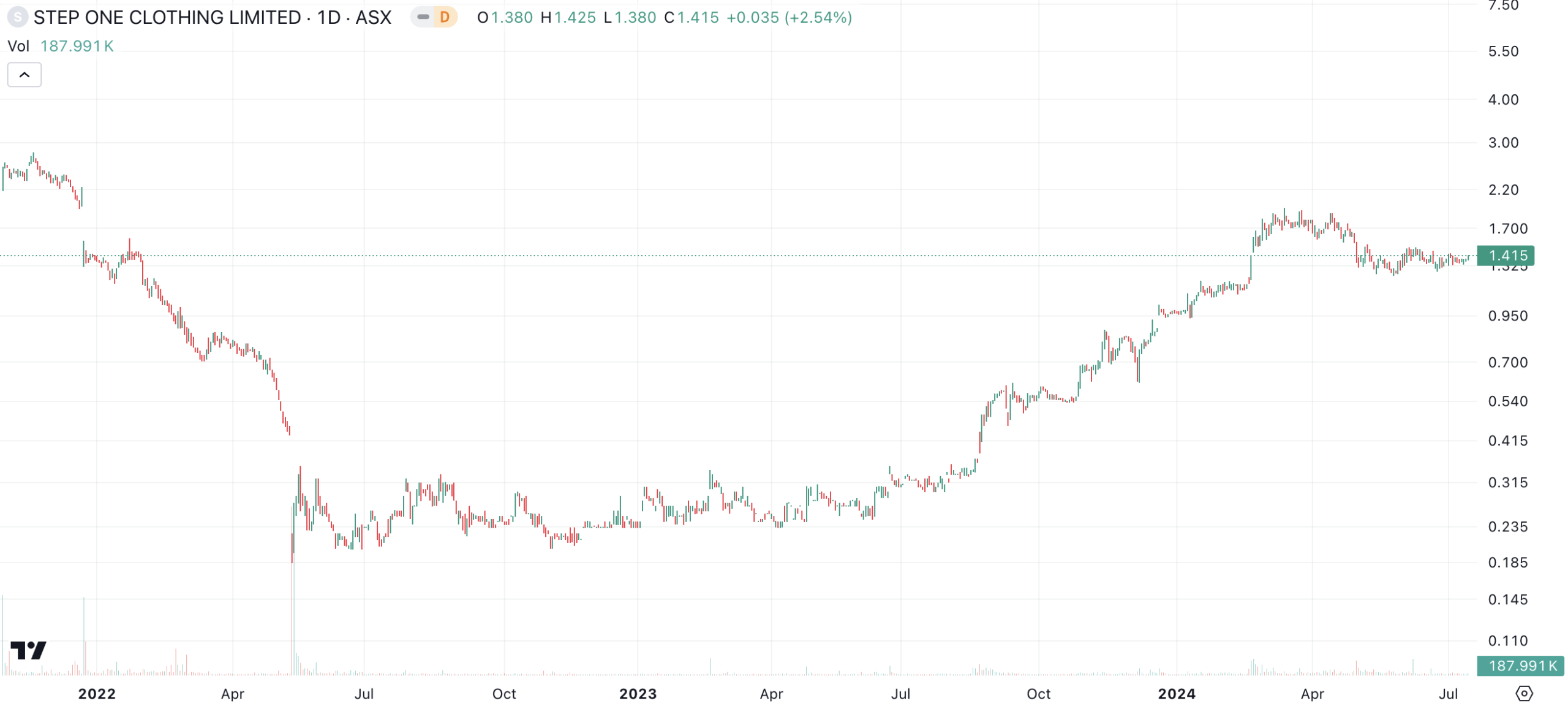
Step One (ASX:STP) share price chart, log scale (Source: TradingView)
What are the Best ASX Stocks to invest in right now?
Check our buy/sell tips
Blog Categories
Get Our Top 5 ASX Stocks for FY25
Recent Posts
Zoono (ASX:ZNO): After falling back to Square One, is it for real this time? Its 60% share price spike could be telling
Zoono (ASX:ZNO) shares spiked over 60% on Tuesday (May 20). After a few years of being forgotten, this company is…
TechnologyOne (ASX:TNE) has broken revenue and profit records for 16 straight years, but is it overvalued?
TechnologyOne (ASX:TNE) claims to have broken its profit and revenue records for 16 straight years. Not many other companies can…
5 stocks that reinvented themselves successfully
Today we look at stocks that reinvented themselves with complete success. Although many listed companies are several decades old, virtually…



